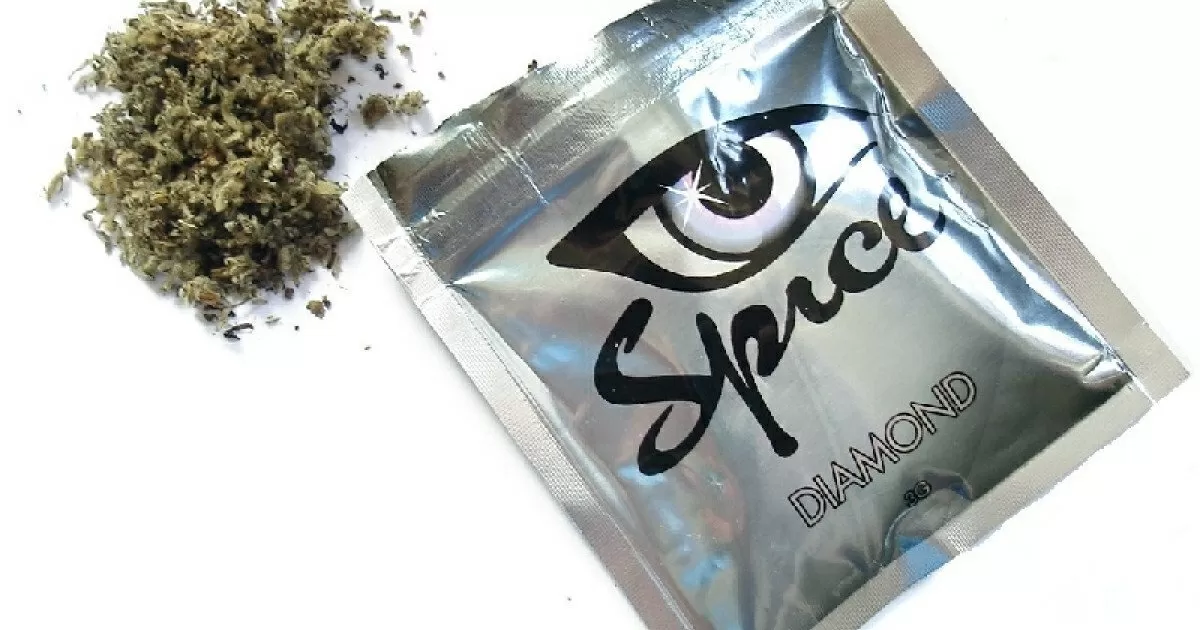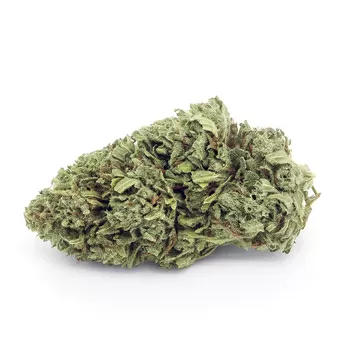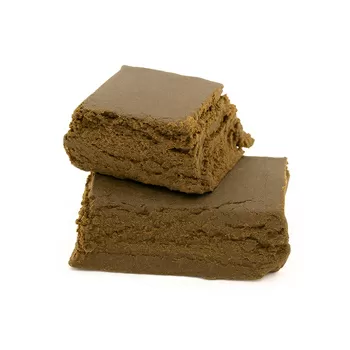It is called Spice and is rapidly gaining ground: it is nothing more than a synthetic drug similar to legal marijuana, although the health consequences are a real threat. There are many similarities with the well-known hemp sativa, but just as many differences.
Spice or synthetic marijuana is in fact a mix of herbs supplemented with a number of chemicals, the effects of which are reminiscent of ganja, a factor that is contributing to much confusion. However, it was created in a laboratory and is a synthetic product that has nothing to do with the plant material known for its proven medicinal properties.
This substance is in fact called 'the zombie drug' because of the many videos that have been circulating for months on the Internet showing users who, under the influence of this drug, resemble in every way the living dead that are usually seen in classic horror films.
Synthetic marijuana can be smoked, added to cannabis or taken in the form of an infusion. It would all seem normal were it not for the chemicals present in the drug, which produce effects that are not exactly similar to those of an ordinary joint.
It binds with the same receptors that are generally affected by THC or tetracannabidiol, but in a more pronounced manner, thus causing an extremely powerful experience with unpredictable consequences: accelerated heartbeat, confusion, vomiting, nausea, hallucinations and altered perception are just a few examples, but also high blood pressure, ischaemia and, in serious cases, full-blown heart attacks.
And to make matters worse, statistics show that it is mainly the young and very young who enjoy its consumption.
What is synthetic marijuana and how did it come about?
Synthetic cannabinoids have been a major source of illegal trade for some time now, but recent incidents in the USA have been particularly alarming and have attracted public attention. In August alone, in the New Haven Green area near Yale University in Connecticut, 71 people overdosed on K2, at least six of whom were close to death.
On 19 August, the Food and Drug Administration (FDA) itself raised the alarm about a shipment of synthetic marijuana contaminated with some substances commonly found in rodenticides.
Although somewhat muted as in these cases, synthetic marijuana carries serious side effects with a higher risk rate of around 30% compared to ordinary cannabis.
The attraction for young people and the very young at heart is undoubtedly the relatively low cost, as well as the particularly strong psychotropic effects. The less persistent and recognisable odour as well as the greater difficulty for the substance to be traced in urine tests are no less important.
The particular mixture of plant matter that makes up synthetic cannabis, which goes by the names of K2, Spice, AK47, to name but a few, resembles cannabis in every way: however, the production process, which is rather approximate, involves the integration of psychoactive substances produced in the laboratory and left to be absorbed by the cannabis itself, often consisting of leaves and inflorescences which, while also having psychotropic effects, may have previously been contaminated with mould, pesticides, heavy metals and even salmonella.
So how did Spice or synthetic marijuana come about? It was in 2004 that John Huffman, in collaboration with other scientists, began to study and document the production of synthetic cannabinoids in the United States.
The intention was certainly not to produce new narcotic substances, but simply to study the functioning of the endogenous cannabinoid system, which traditionally has a significant influence on the body.
He certainly would not have imagined that the discoveries he made would be used to produce what only a few years later would generate the case: the 'new drug' Spice.
To this day, the process by which the chemists in the clandestine laboratories, starting in 2008, produced the first compounds that emerged on the Clemson University campus and were later identified by a forensic laboratory in Germany, is still unclear.
JWH-018 was the first synthetic cannabinoid to be identified as an adulterant in Germany.
Today, there are many chemically processed products that mimic the active ingredients in cannabis, usually sprayed on dried or shredded plant matter. They can be smoked or placed in the form of liquids to be vaporised by means of electronic cigarettes or specific devices such as vaporizers, or taken as simple infusions and herbal teas.
Spice, K2, Joker, Black Mamba, Kush, Kronic are just some of the names by which the many types of synthetic marijuana are identified, all belonging to the second generation of cannabinoids, which shares many of the characteristics of what was originally produced by Huffman.
However, it is the synthetic cannabinoids belonging to the next generation that have different characteristics: in 2014 alone, 177 different synthetic active ingredients were identified, a rather alarming figure if one considers that in practice the effects are still almost totally unknown and can only be surmised.
To exacerbate a situation that risks getting completely out of control, less experienced users believe they are dealing with products of natural origin that allow them to get high without running any risk, a truly misleading principle considering the physical and mental health effects of synthetic marijuana that are in fact far from being underestimated.
Effects, risks and contraindications of synthetic marijuana
Synthetic marijuana, usually called spice, has long term been regarded as an alternative to ordinary cannabis, despite the fact that it was originally created in the laboratory solely to study the functioning of the cannabinoid system as well as the impact that taking it generally has on the brain.
Although many believe it to be a naturally occurring substance, there are now over a hundred synthetic cannabinoids products, the effects of which can be as unpredictable as they are potentially lethal. In fact, synthetic marijuana is classified as a new psychoactive substance or NPS, which is not regulated in any way and leads to altered states, generally producing the similar effects as illegal drugs.
In fact, it is responsible for the much sought-after 'high', which is greatly amplified compared to the use of THC alone, with deleterious consequences for the body.
Synthetic marijuana acts on the same receptors in brain cells as THC or delta-9-tetrahydrocannabinol, the psychoactive active ingredient in marijuana that causes a high.
Many users claim to experience the same euphoric effect as the main marijuana strains, but for a shorter period of time, while others describe themselves as relaxed and accompanied by a pleasant feeling of well-being. Noteworthy is the rather sour aroma that tends to cause a tingling sensation in the throat even after consumption.
Many people mistakenly believe that synthetic marijuana is safe because it is 'lab-grown' and of natural origin.
However, increasing numbers of people, especially in the United States, are reporting increased visits to the emergency room due to complaints such as rapid heartbeat, vomiting, violent behaviour, suicidal thoughts, kidney damage and seizures, which are among the most common symptoms following consumption. These reactions are more than normal, considering that Spice is made up of hundreds of synthetic and artificial chemicals that are sprayed onto the ground plant material.
The most common side effects generally include altered mood and perception, relaxation, symptoms of psychosis, extreme anxiety, confusion, paranoia, hallucinations, violent behaviour, suicidal thoughts, rapid heartbeat, increased blood pressure, disorientation, vomiting, kidney damage and convulsions.
These contraindications are mainly attributable to the potency of synthetic marijuana: it contains active ingredients and synthetic cannabinoids similar to THC, which can be over 600 times more potent than those commonly found in cannabis.
No less important is the frequent presence of additives, which are often toxic, as well as other types of narcotic substances, which contribute to making fake weed often particularly deleterious and harmful.
How to recognise synthetic marijuana
Spice, especially in the United States, is particularly attractive and appealing, with colourful packaging featuring superheroes, cartoon characters and cute emoticons. Cheap and readily available, synthetic marijuana, much more potent than cannabis, is in fact far from safe.
Unlike the good weed, it does not come in the form of inflorescences but in the form of shreds, often more or less dark brown or in a form similar to CBD e-liquid ready to be vaped.
Sometimes such vials are made even more misleading by labelling them as CBD oil, when in fact they contain only and exclusively cannabinoids of synthetic origin.
Synthetic marijuana originates as a mixture of artificial chemicals designed to mimic tetrahydrocannabinol (THC), the active ingredient in cannabis, which are sprayed onto dried plant material, often of dubious origin, and then packaged and marketed.
It is impossible to know exactly what chemicals are actually present in each package of plant material, since synthetic marijuana is generally produced in clandestine laboratories in China and other countries and smuggled into the United States and only later into Europe: the 'recipes' are repeatedly changed, making it difficult to identify what is actually present and what active ingredient one is about to take.
Also misleading are the indications generally placed on the packaging such as 'not for human consumption' and 'not for burning, smoking or incineration', even though the user is aware that he or she is buying it for the same purpose.
Identifying synthetic marijuana from cannabis sativa is therefore relatively easy, especially if the sense organs are used to the full: sight and smell above all.
If cannabis is sold in the form of hashish or dried inflorescences, the synthetic substitute resembles mixed shreds, often not very homogeneous and uniform, resembling a potpourri of different herbs. Similarly, the nose can also help to dispel any doubts.
In synthetic marijuana, there are pronounced chemical smells, often unpleasant and overly smoky, also perceived on the palate where the substance appears bitter and almost unpleasantly spicy.
Natural cannabis, on the other hand, appears moist and compact and has a characteristic odour that is chemically irreproducible, given the massive presence of terpenes, responsible for the aromatic characteristics typical of sativa or indica cannabis.
Beyond synthetic marijuana: What are synthetic cannabinoids?
Synthetic cannabinoids fall into the class of molecules that bind to the same cannabinoid receptors that cause the effects of THC and CBD. Commonly vaporised on plant matter, they are basically created to avoid legal restrictions related to cannabis, resulting in alternative narcotic substances that, although readily available, can be particularly harmful to the body.
Most synthetic cannabinoids are considered to be cannabinoid receptor agonists, meaning that they have been designed to fully mimic THC or tentracannabidiol, a natural cannabinoid with a strong binding affinity to the CB1 receptor, responsible for the characteristic psychotropic and psychoactive effects of marijuana. These synthetic analogues actually have a binding affinity that results in a significantly higher potency, perceived by the CB1 receptors themselves.
Palpitations, paranoia, anxiety, nausea, poor coordination, convulsions, alterations in perception and mood are just some of the unpleasant consequences of taking the drug. In serious cases, synthetic cannabinoids can even lead to death, often from cardiac arrest.
Legal and medical cannabis have never caused any harm, and it is as important as ever to use common sense and avoid experimentation, which could also prove fatal. A valuable tip? Roll a joint instead!
 Italiano
Italiano Español
Español English
English Français
Français Deutsch
Deutsch



